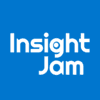We Are All Software Developers Now: The Democratization of Code in a Tech-Driven World

Linux Foundation’s Clyde Seepersad offers commentary on the democratization of code in our tech-driven world. This article originally appeared in Insight Jam, an enterprise IT community that enables human conversation on AI.
The archetype of the software developer — a hoodie-clad engineer fluent in Java or Python — is fast becoming outdated. In 2025, the line between “developer” and “non-developer” is blurring as technical tools become more accessible and essential across nearly every role. According to the 2025 State of Tech Talent Report, AI is not just changing what technologists do; it’s enabling a broader range of professionals to participate in software development and automation — whether they identify as engineers or not.
This trend is not entirely new, but it’s rapidly accelerating. The rise of low-code and no-code platforms, open source frameworks, and generative AI tools like GitHub Copilot and ChatGPT has democratized access to software creation. Employees in marketing, operations, product management, and customer success can now build agents, write scripts, and even prototype apps. What used to require years of formal training can now be achieved with curated learning modules, pre-built APIs, and assistive coding environments.
The Tech Talent report highlights that AI-assisted development is already present in 43% of organizations, and nearly a third are upskilling their existing workforce to interact with AI tools. This shift reflects a deeper transformation: software is no longer just the domain of IT departments — it is a core competency for modern work. Whether you’re automating a spreadsheet workflow, customizing a CRM tool, or configuring a chatbot, you are, in effect, a software developer.
The implications are enormous for both workers and organizations. First, technical literacy is becoming a baseline skill. Much like reading and writing were once considered advanced capabilities but are now prerequisites for knowledge work, the ability to engage with software — to script, query, configure, and automate — is becoming essential. Even entry-level positions are seeing AI tool fluency emerge as a hiring criterion. The report notes that AI tools have already replaced many traditional entry-level tasks, and companies expect new hires to be AI-ready from day one.
Second, organizations must adapt their training, hiring, and infrastructure to reflect this new reality. The data shows that upskilling is now the leading workforce development strategy, used by 72% of organizations, outpacing new hiring and consulting. However, upskilling shouldn’t just target traditional IT roles.
Third, software development itself is changing. Collaboration between “citizen developers” and engineering teams is becoming the norm. In this hybrid model, non-developers can build initial prototypes or automate routine tasks, while professional developers focus on system integration, security, scalability, and architecture. Open source culture plays a critical role in this landscape. As the report notes, 84% of organizations view open source as an effective strategy for retention and skills development — in part because it lowers the barrier to entry and invites broader participation.
This democratization also alters how organizations assess talent. The emphasis is shifting from degrees to demonstrable skills. Practical portfolios, open source contributions, and hands-on experience are now considered more valuable than traditional credentials. Certifications still matter (71% importance), but they are increasingly paired with proof of real-world application. This benefits individuals from non-traditional backgrounds and expands the pipeline of capable contributors — many of whom might not have considered themselves “developers” five years ago.
But democratization is not without risks. Security, governance, and quality control become more complex when software development is decentralized. Shadow IT, poorly maintained scripts, and inconsistent code practices can create operational and security vulnerabilities. That’s why part of the modernization playbook must include guardrails, templates, and mentoring structures that support this new generation of “accidental developers.”
Moreover, this shift brings cultural implications. It demands that engineering leaders embrace cross-functional collaboration and that non-technical leaders appreciate the intricacies of software design and deployment. Organizations that thrive will be those that cultivate psychological safety — where employees feel empowered to experiment, ask questions, and build together.
Looking ahead, the idea that software development is someone else’s job is no longer tenable. Whether working in logistics or legal, every knowledge worker will need to engage with code in some capacity. AI tools will amplify this trend, not reverse it. As machines generate more of the syntax, it is human creativity, context-awareness, and problem framing that will define successful software initiatives.
In short, we are all software developers now. The companies that recognize and embrace this shift will be more innovative, more agile, and better equipped to solve the complex challenges of a digital economy.
Download the 2025 State of Tech Talent Report – Truth vs. Vibe: The Not So Disruptive Workforce Impact of AI for free.






